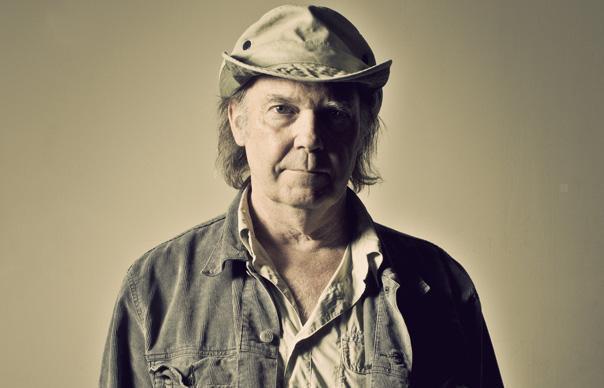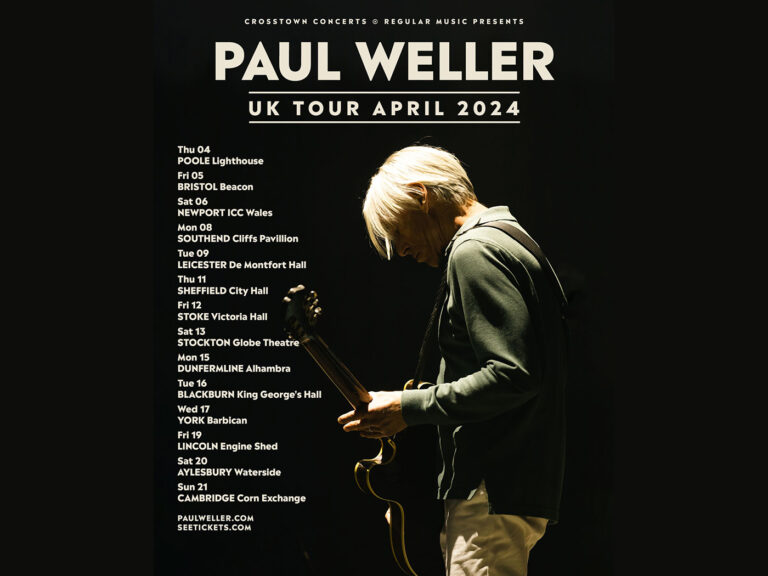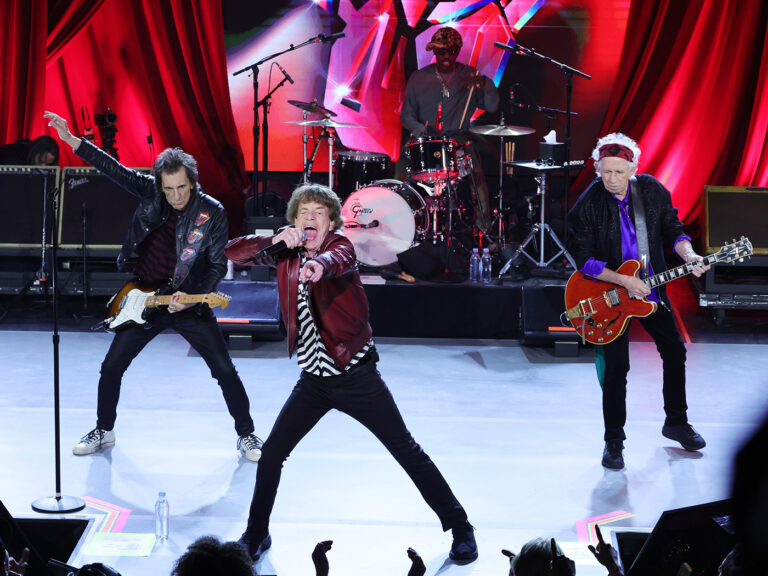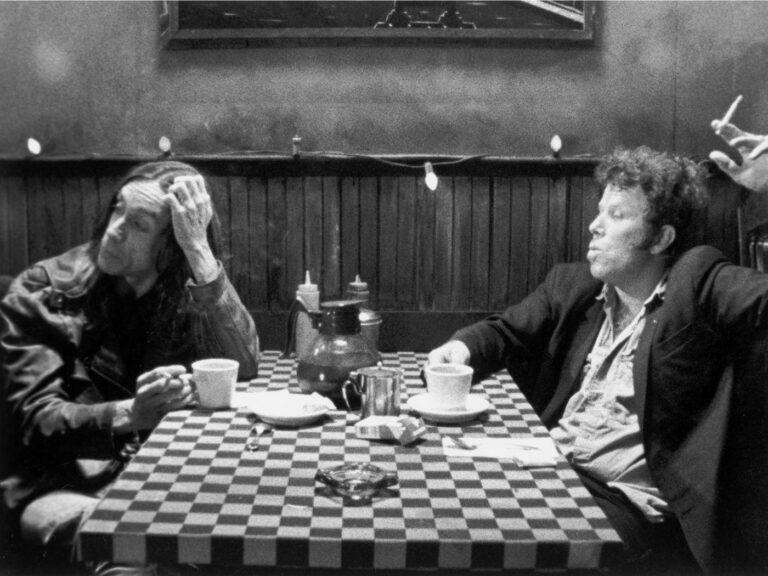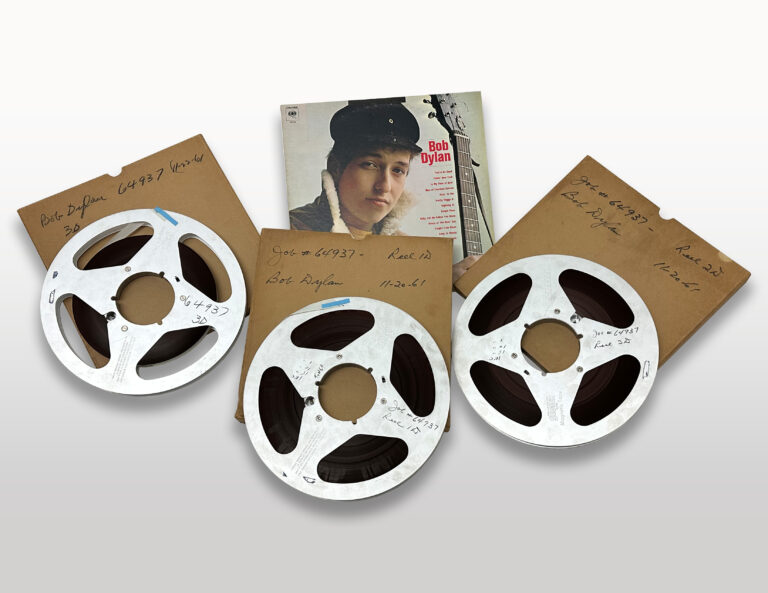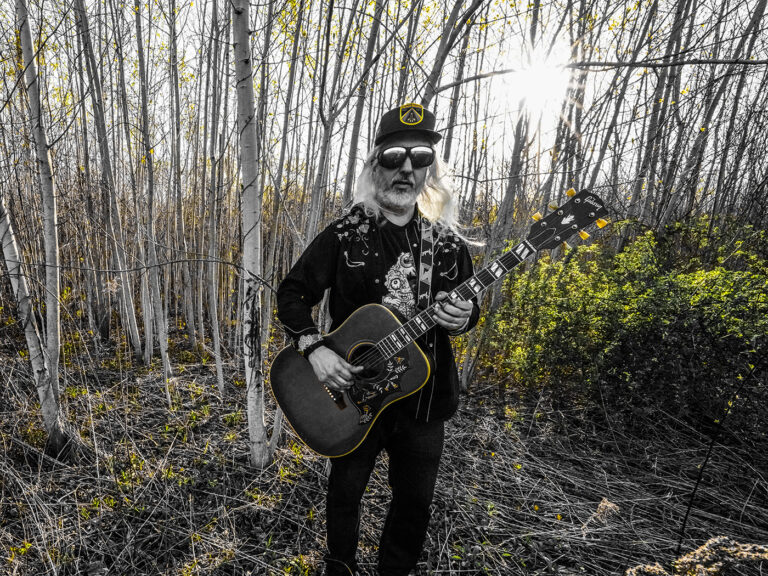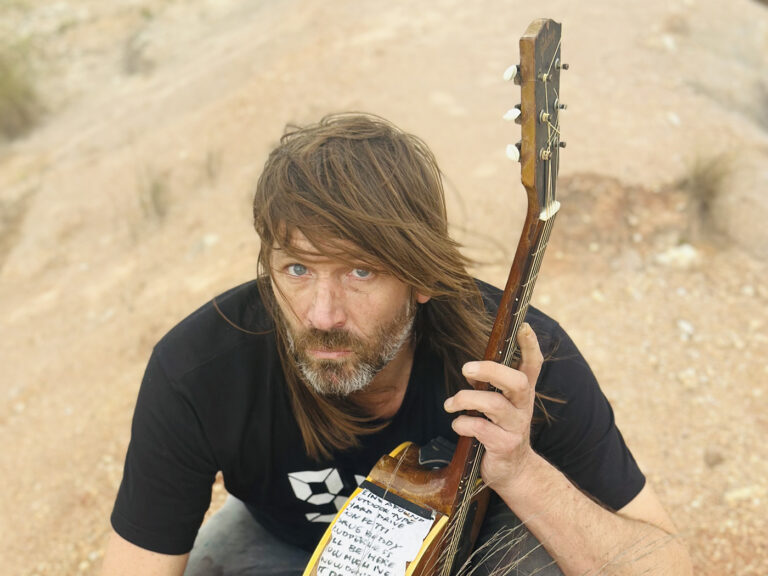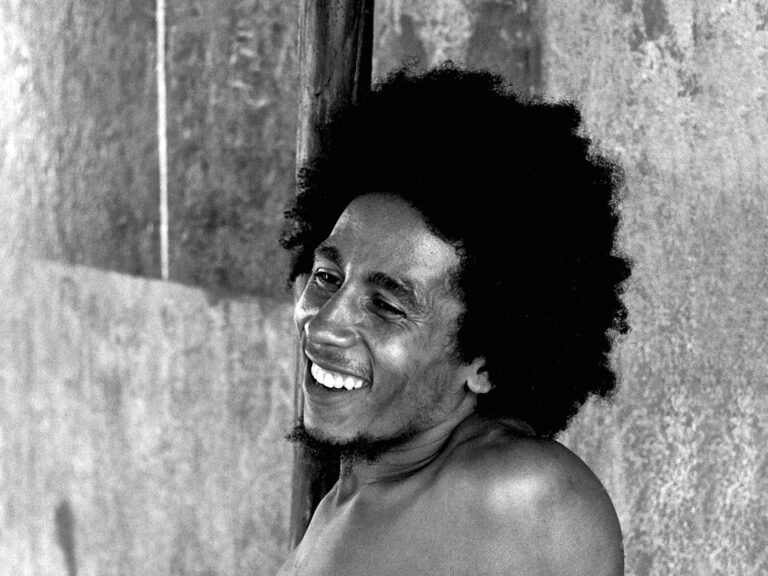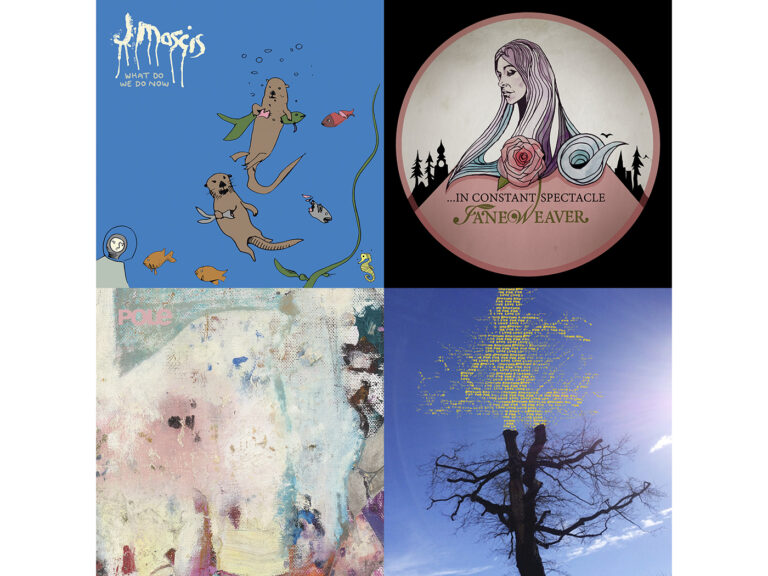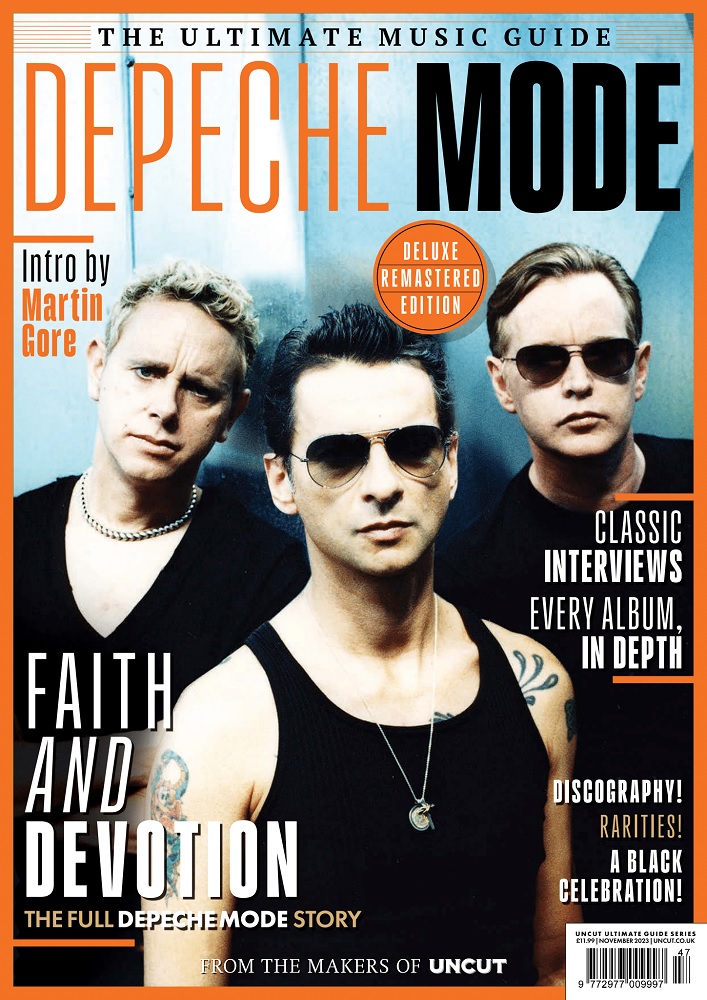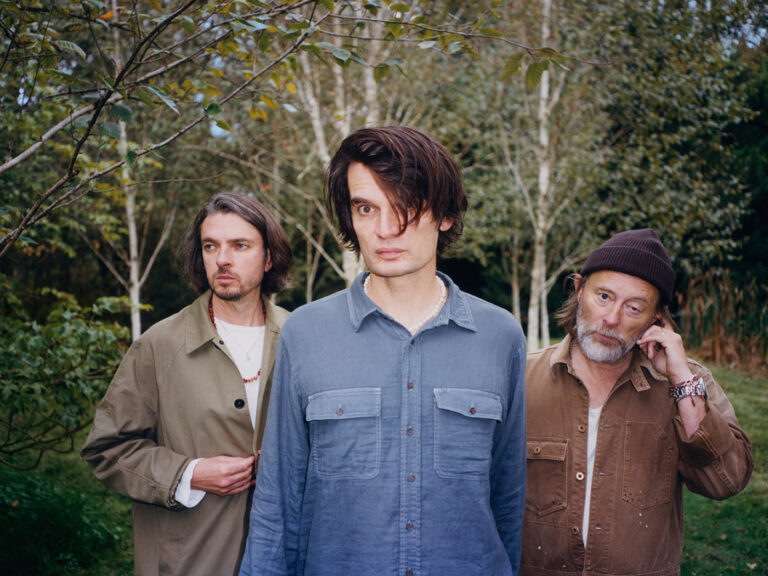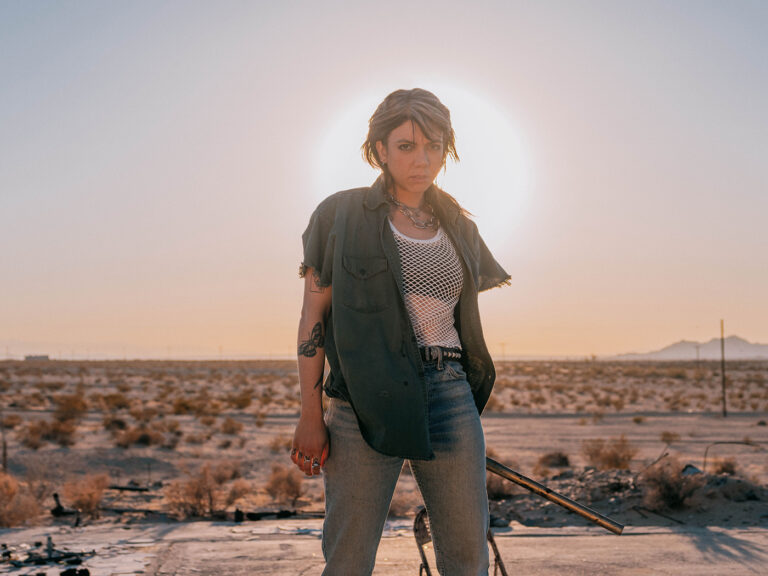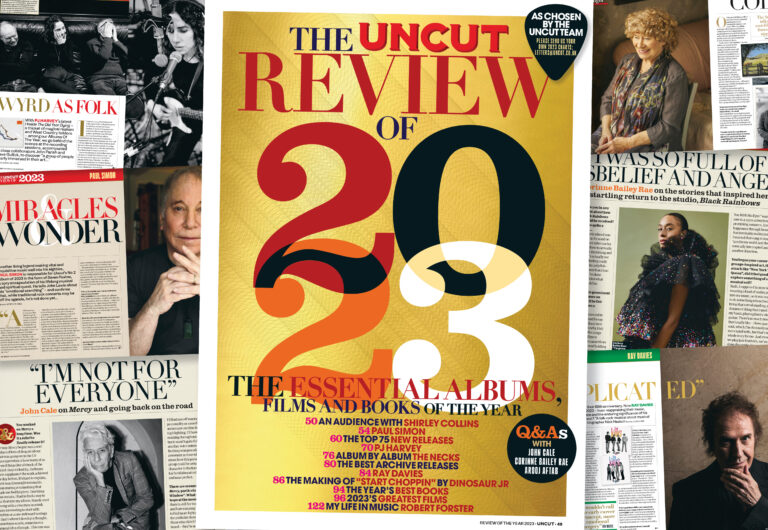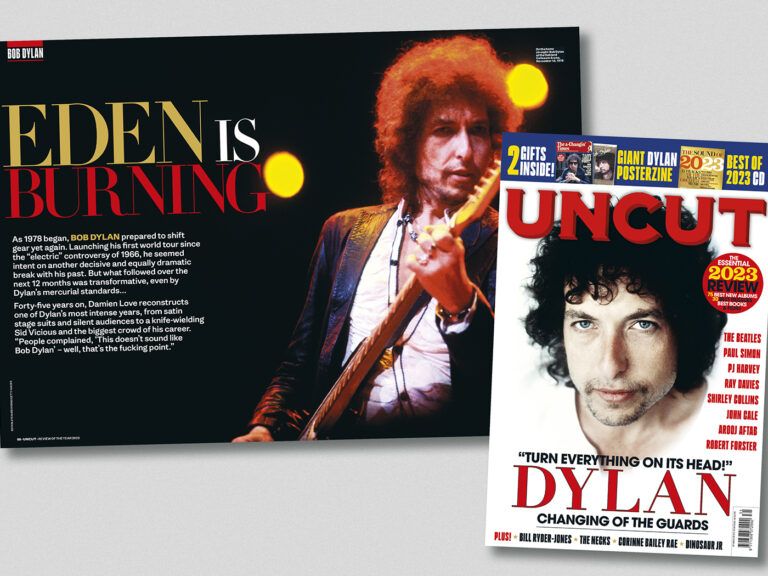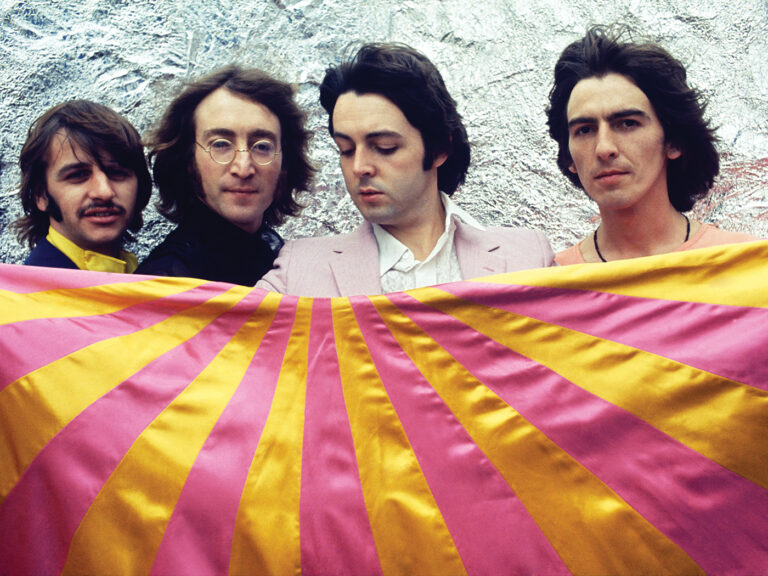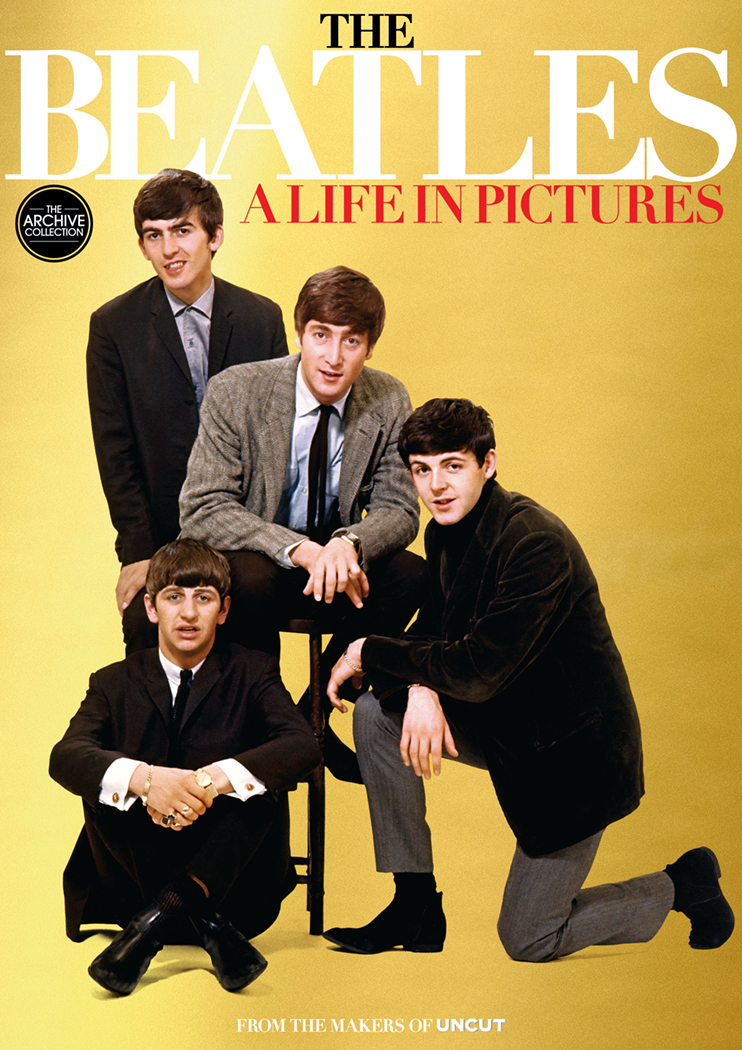This feature originally appeared in Uncut’s December 2020 issue
Joni Mitchell has lived in the same hilltop villa, overlooking the Bel-Air Country Club, since July 1974. Hidden from the street, with its own private drive, most of her creative life can be measured in its walls and spaces. Inside the six-bedroom house, built in 1930, there are musical instruments, mementos and small sculptures. A baby grand piano sits in the living room. Strikingly, the walls are decorated with her own canvasses – landscapes, still lifes, studies of Picasso, Charles Mingus, Miles Davis, Van Gogh. And, of course, the original self-portraits used on album sleeves like Turbulent Indigo, Travelogue and Both Sides Now.
ORDER NOW: Bob Dylan and The Review Of 2023 star in the latest UNCUT
“I’ve been there many times,” David Crosby tells Uncut. “It’s kind of like a museum in that she’s got her paintings everywhere. And she’s a brilliant painter. So you walk in the house and you’re smitten. You have to struggle to remember to have a conversation, because your eyes are glued to this stuff: ‘Oh my God, look at that one!'”
Traditionally, Mitchell has guarded her privacy here with steadfast conviction. She has likened the place to a refuge in which she lived in relative seclusion. Seven years on, however, her outlook appears to be changing. The arrival of the mouth-watering Archives Volume 1: The Early Years (1963-1967) is the latest sign of renewed activity in the Mitchell camp. Begun in 2018, it’s the first in a series of archival releases scheduled for the coming years.
Film director and screenwriter Cameron Crowe first visited the house in 1979, when Mitchell granted him a rare interview during his time as journalist for Rolling Stone. The pair have stayed in touch ever since, to the point where Crowe is now part of her trusted inner circle. Early this year he spent a couple of Sundays on the patio, talking to Mitchell about Archives Volume 1. Their warm, digressive conversations act as liner notes for the five-CD box set, which contains nearly six hours of unreleased gold – home demos, live recordings, radio sessions – from Mitchell’s formative days.
“Generally we’d be outside in her garden, which she calls Tuscany, because it has that vibe,” Crowe explains of their meetings. “The stuff on Archives Volume 1 is a miracle for any real fan of hers, because she’s not opened the vault on this early material before. And barely even discussed it. So the idea that she was going to focus on this period, inviting questions and thoughts, was just fantastic.”
Mitchell has been directing operations from home, aided by longtime friend and associate Marcy Gensic and chief archivist Joel Bernstein. When not busy with this catalogue of rarities, she’s been spending much of her time, pre-Covid, either dancing at a Burbank roadhouse bar or hosting regular hootenannies. These informal gatherings have featured everyone from Elton John, Bonnie Raitt and Chaka Khan to Harry Styles, Sam Smith and Brandi Carlile. “We’d get together about once a month,” says Carlile. “There’s so much joy and generosity involved. Joni sings too. She sounds great – clear and light-hearted.”
Crowe is ideally placed to note the shift in Mitchell’s life. “The atmosphere in the house is always warm and super-creative,” he says. “When I first went there, it felt like an inner sanctum. But over time it’s only become more heartfelt. You’re never far from an instrument and there’s always a comfortable sofa to sit in. It’s not ornate. It’s wide open and it invites love.”
Since suffering a brain aneurysm at home in March 2015, Mitchell has gradually returned to public view. Chaka Khan and Judy Collins were among the first to relay encouraging news of their good friend’s improving health later that year, before Mitchell was spotted out and about at a Chick Corea gig in Los Angeles the following summer.
Her first significant foray came in February 2017, when Crowe and author Daniel Levitin escorted Mitchell to Clive Davis‘ annual pre-Grammy Gala at the Beverly Hilton Hotel. The guests – including Jane Fonda, Stevie Wonder, Ringo Starr, Herbie Hancock and Michael Keaton – gave her a standing ovation. Judy Collins went further, making a tribute speech and performing “Both Sides Now,” the song that carried her into the Billboard Top 10 in 1968, a year before Mitchell released it on Clouds.
“It was very emotional,” says Collins. “Even though neither Joni nor I had been on his Columbia label, Clive had a great feeling for her work and wanted to do something special by having me do that song for her. Joni and I sat around the same table and there were lots of people that we all knew. It was very much a homecoming event. Clive was beaming because he’d managed to pull this thing off.”
The 23-year-old Joni Mitchell who performs “Both Sides Now” on Archives Volume 1, from a Philadelphia radio station in March 1967, is brimming with enthusiasm. “It’s a very new song and I’ve been driving everybody crazy by playing it two or three times each night,” she bubbles. So new, in fact, that she’s still halfway through Henderson The Rain King, the Saul Bellow book that inspired it.
“She was wandering around Greenwich Village, looking for somebody to notice her,” recalls Collins. “Then sometime in the spring of 1967, at three o’clock in the morning, my friend Al Kooper called me and told me about this songwriter he’d just met in a bar: he put Joni Mitchell on the phone and she sang me ‘Both Sides Now‘. Of course it changed both of our lives. She was clearly an extraordinary talent.”
Kooper and Collins weren’t the first ones to notice her. For Archives Volume I, Saskatoon DJ Barry Bowman, who first encountered Mitchell when she was paying her way at art school by modelling and singing in local coffeehouses, has bequeathed his audition tape. Bowman’s recordings for CFQC AM take place in 1963, when Mitchell was 19. Consisting of old folk standards, they’re the earliest known examples of Mitchell on tape, just voice and ukulele. Bowman only rediscovered them by chance, when his daughter brought over an old box of reel-to-reels, more than 50 years later.
“When it came to Archives, the Bowman tapes became the holy grail,” explains Crowe, who became involved with the project a year ago. “It was the perfect place to start for Joni. From there it was filling in the various phases and collecting some of the private tapes, many of which came from Joel Bernstein, who she gave most of her stuff to in the 70s and 80s for safekeeping. Joni told me that everybody felt the loss of Elliot Roberts, her old manager [who died in June 2019], in a big way. She said Elliot had always wanted her to consider doing this and she figured out a way. I think she consulted with Neil Young, who suggested they do it chronologically.”
However tentative these earliest recordings sound – whether it be covers of “House Of The Rising Sun“, “Dark As A Dungeon” or “Deportee (Plane Wreck At Los Gatos)” – Mitchell still exudes confidence and a steely resolve. Especially on stage, where she engages the audience with stories between songs. She’s also structuring her set list deliberately, allowing themes to develop – each song speaking to the next.
“She’s mixing and matching,” says Crowe; ‘here’s the beginning of a relationship, here’s the end.’ So she’s already curating. But she’s really working these rooms. If you listen to the club stuff, she’s firing on all cylinders. She’s also really good with the camera. She was a model, originally, and I talked about this with her a bunch. So when she does these TV shows back in the very early days, she kills it. And she’s still that person. I remember [one] time she went to Clive Davis‘ pre-Grammy party. Clive was announcing her and I saw the spotlight moving around the room, looking for her. As Joni saw it coming, she lifted her chin at this perfect angle to meet the spotlight. I was like, ‘damn!’ She’s always had that striking charisma without ever playing overtly into it.”
Two months ago, Mitchell invited David Crosby round for dinner. The pair first met when Crosby saw her at Miami’s Gaslight Café in September 1967. Four weeks later, as heard live on Archives, Mitchell has already acknowledged him in song, as the free-spirited sailor of “Cactus Tree” – “bearing beads from California”.
“There were lots of other girl singers around, but they weren’t even close to Joni,” Crosby recalls. “And I just wanted to be with her. But I had to get used to the fact that she was going to write songs to me and about me. She did that with ‘Song To A Seagull’ and ‘Cactus Tree’. Then later on, when she wanted to get rid of me, she said goodbye in ‘That Song About The Midway‘.”
Despite the hardships of the past few years, Mitchell is still the same person she ever was, according to Crosby. “You can never count her out, because this is a very tough woman,” he states. “She took a big hit and she’s fighting her way back. She’s painting again, because I’ve seen her. I want to hear the music that lives inside of her, too.”
In February 2018, she and Crosby attended David Geffen’s 75th birthday party in Jimmy Iovine‘s sixty-million-dollar Malibu home. “There were only five musicians there: Joni, Elton, Bruce, McCartney and me,” says Crosby. “Everybody else was much bigger than me. I was so happy to see Joni. She gave me a huge smile. We don’t always get along, but I do love her, man”
Unsurprisingly, given his public falling out with his ex-CSNY partner, Crosby didn’t make it to Neil Young‘s secret wedding to Daryl Hannah that August. Mitchell was invited though, as was Stephen Stills. Three months later, on November 6 and 7, she was center-of-attention in her own right, for Joni 75: A Birthday Celebration at Los Angeles’ Dorothy Chandler Pavilion. The lineup included Emmylou Harris, Norah Jones, Kris Kristofferson, Graham Nash, James Taylor, Rufus Wainwright and Brandi Carlile. Looking immaculate in platinum braid and long red coat, Mitchell accepted a birthday cake from her guests and joined them onstage during a massed rendition of “Big Yellow Taxi“.
“The outpouring of love and affection was unprecedented,” recalls Nash, who sat at the piano to perform “Our House“, the CSNY song he’d written to bless their romantic union in the late ’60s. “During the last chorus, when the audience sang along, I turned my head to the right to see her in the front row. And she was smiling and singing along too. That was an incredible moment for me, personally – to see Joni, at 75, singing the song that I wrote for her fifty years ago. After the show, everybody wanted to shake her hand and tell her what she meant to them. I was at the table with Joan and James Taylor and she looked so happy. When the crush of people had lessened, I went up to her and asked, ‘Have you got anything coming? Any new songs?’ She looked at me with that Joni Mitchell thousand-yard stare and said, ‘No, not yet.’ I loved the fact she said not yet.”
Nash has visited his former partner three or four times in the past couple of years. “We talk about what happened to her and me, how our lives changed and where we moved on to,” he says. “Our parting was painful and sad, but we’ve remained friends.”
Mitchell’s return to the wider cultural landscape has manifested itself in various ways. Sometimes she’s been absent while others have honoured her, as when old ally Eric Andersen picked up a Lifetime Achievement gong on her behalf at Montreal’s International Folk Awards last year. Or when Saskatoon saluted its greatest export in the form of a newly named riverfront, “Joni Mitchell Promenade”, in June 2018.
Altogether more spectacular is the footage of her in Rolling Thunder Revue, Martin Scorsese’s documentary about Bob Dylan‘s famous travelling circus of 1975. Mitchell had written a luminous new song on the road, “Coyote“, and plays it at Gordon Lightfoot‘s house, with Dylan and Roger McGuinn on acoustic guitars. It’s a potent reminder of Mitchell at her dazzling peak, cutting through the chaos with clear-eyed acuity.
Not long after the film’s Netflix debut in June 2019, Mitchell began popping up at more events. There was a Blondie gig at the Santa Barbara Bowl, followed by the San Diego premiere of Crowe’s stage-musical version of Almost Famous, which required the leads to sing her classic break-up ballad, “River“.
“At intermission I went to find her and she was just glowing at our play,” Crowe recalls. “Afterwards she stayed at this party in the courtyard, outside the Old Globe Theatre, for three and a half hours. And posed for every picture with every actor and all their friends. And it was not duty. It was just bringing her kind of love. She said: ‘This is better than the movies!'”
A month later, Carlile and her band paid tribute to guest-of-honour Mitchell by performing Blue in its entirety at the Walt Disney Concert Hall in Los Angeles. “It was more than just scary,” confesses Carlile. “I actually went to a hypnotist beforehand so that I could get through it. I do a lot of teasing myself around Joan. I’d tell her ‘I’m a country station, I’m a little bit corny,’ and Joni would just say, ‘Don’t be silly. It’s just another party. We’re going to have fun.'”
Carlile’s friendship with Mitchell had deepened over the previous year, since appearing at the Joni 75 event. One night after dinner at Mitchell’s place, she says “Joni got to talking about her desire to have music in her house. She wasn’t making any promises about touching an instrument, but they were there and sometimes she wished that people were playing them. So she suggested a jam, or a series of jam sessions.”
With Carlile and Marcy Gensic at the helm, they set about finding players. Carlile brought along Andrew Hozier to the first one, arriving at the door with an orchid and a bottle of champagne. “I was so nervous,” she says. “It felt like an elaborate prank. Joni has this radiance, like a cat, where you get the feeling she could take you or leave you, but you almost wouldn’t want it any other way. We were just kind of stunned to be there. So we wind up in the living room, where Hozier plays an old Irish folk tune and I start singing ‘Helplessly Hoping‘ by Crosby, Stills & Nash. Apropos of nothing, Chaka Khan walks into the room, sits down, and throws a harmony over it. I’m thinking, ‘What the fuck!’ And right behind her comes Herbie Hancock, who promptly sits down at the piano and starts playing. My brain is exploding at this point. I look over at Joni and she’s just laughing, because she can see us squirm and look sufficiently shocked.”
The impish sense of glee seems to be a guiding principle behind the jams. Crowe remembers Elton John being “blown away by how Joni takes such delight in everybody playing music.” Crowe watched from the sofa on New Year’s Eve as Mitchell played host to Eric Idle, Chaka Khan, veteran publicist Elliot Mintz and various girlfriends and helpers. “They’re not huge gatherings, but they’re very soulful ones,” he observes. “Everybody lets loose. As she often says, she’s a dancer and a rock ‘n’ roller at heart, and it’s that Joni that people see on those nights. Pure joy. It’s ‘Raised On Robbery‘-style Joni. For people wondering what she’s been up to, she’s living a very full and creative life.”
During the process of compiling Archives, Mitchell also decided to revisit a handcrafted project from late 1971. Informally titled The Christmas Book, it’s a compendium of drawings and watercolour paintings, interspersed with poetry and handwritten lyrics, that she gifted to a select group of close friends in the wake of Blue. “It’s a beautiful thing,” says Nash. “I actually have two original copies and one of them is signed to me.”
Mitchell dug out hers, added several pieces that didn’t make the original cut and reproduced the whole thing for public consumption. Morning Glory On The Vine: Early Songs And Drawings was published in October 2019, complete with a new, Joni-penned foreword. It’s an exquisite piece of work. Moreover, it suggests that, for Mitchell, the disciplines of poetry, music and visual art are interchangeable, a fluid cycle of nourishment and inspiration.
It’s tempting to draw the conclusion that Archives Volume I and Morning Glory On The Vine are evidence of Mitchell, at 76, starting to tend her own legacy. But it may not be that simple, or even strategic. “I’ve spent a lot of time just going up to the house, having a glass of wine and a quiet night with Joni and listening to her talk about these projects,” says Carlile. “She’s not arrogant enough to care about her legacy. This is just a way of putting something beautiful in the world. It’s her interpretation of what she can do now, drawing attention to things she’s done in her life that she’s proud of. It’s got very little to do with ego.”
For Crowe, Archives Volume I isn’t merely an archaeological dig. It’s an opportunity for Mitchell to reassess and confront her feelings about her younger self. “I think it’s brought her a real sense of humour about that period,” he offers. “Maybe it’s unloaded some baggage that she might have had about those early songs. Joni listened very carefully to that stuff in her living room and warmed to the young artist she heard singing those folk songs. I think she’d been very hard on that initial phase, in no small part because the folk community had been so tough on her. But what you hear is a sparkling young artist finding her way.”
Speaking to The Guardian earlier this year, Mitchell’s former beau James Taylor teased that she may be “coming back musically”, fuelling rumours that she was writing and recording again. Neither Crowe nor Carlile, however, have seen any evidence so far. Rather, Mitchell’s energies have been directed elsewhere. “She’s been so into the Archives project and Morning Glory,” says Carlile. “It’s been very much a labour of love for her and the closest people in her life. None of this could have happened without Joni’s approval, enthusiasm and love for it all. She’s been in the wars, she’s had a hell of a recovery and it’s just been unbelievable. She’s an astounding woman.”
In light of all the tributes in recent years, Carlile believes that Mitchell is finally aware of the sheer depth of hero worship and admiration that the world has for her. “She’s tickled and perplexed by it,” Carlile offers. “She knows that she has very few contemporaries and that she might be the best there’s ever been – and she detests false humility – but I think she’s only just beginning to grasp how beloved and how important she is to our generation of followers. You see this twinkle that’s like, ‘Holy shit, that’s right, I’m Joni Mitchell!’ come across her face every now and then. She’s an absolute light in the world.”
“People appreciate her so much and I think she enjoys it,” agrees Crowe. “Because you don’t realise that, for a lot of her life, she’s been pushing against obstacles and sometimes prejudice. I’ve seen her in situations where they say, ‘And now, the greatest female singer-songwriter alive!’ Why are we saying ‘female’, guys? That’s something that she’s had to deal with. And you don’t see it, because the size of her genius obscures a lot of that. But if you look closely, not everybody was like Prince, writing her fan mail.”
As for the future, Crowe is convinced there’s a whole lot left. “She has a pretty strong therapy programme and she’s been doing a lot of walking,” he says. “And she dances too. She’s somebody who’s fought her way back, just like she fought her way back from polio as a child. It’s like she said when we talked: ‘I’m a fighter, that’s what! do.’ She did a wonderful line drawing for Archives, which I think shows that it’s all coming back to her. Nothing in her genes seems to accept being vanquished, so we’re just going to keep getting Joni for many years to come.”


